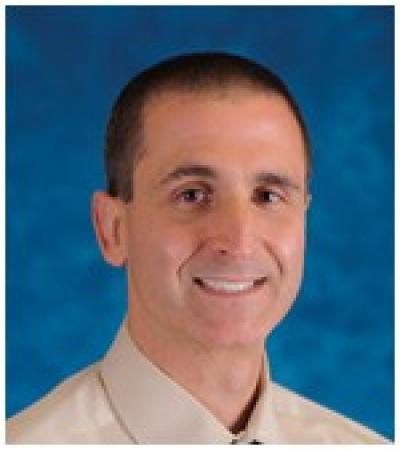MRSA rates varied dramatically across geographic areas

Dr. Brad Spellberg, LA BioMed infectious disease specialist, says dramatic differences in the incidence and rate of change in the number of MRSA and MSSA infections indicate ongoing, fundamental changes in bacterial ecology. Credit: LA BioMed
The rates of community-onset methicillin-resistant Staphylococcus aureus (CO-MRSA) varied dramatically among academic medical centers in California, New York, Illinois and North Carolina, suggesting there is not a uniform change in the “national epidemic” of the “superbug” that has generated extensive public health concern over the past decade, according to a new study.
The study, published online ahead of print in the journal Clinical Infectious Diseases, surveyed hospital records of 4,171 cases of MRSA and MRSA-related infections between 2008 and 2011 in five medical centers located in Los Angeles, San Francisco, Chicago, New York City and Raleigh-Durham, NC.
The rates of MRSA acquired in the community declined 57% from 2008-2011 in the Los Angeles medical center. In contrast, CO-MRSA rates tripled at the New York medical center, while the rates remained stable in San Francisco, Chicago and Raleigh-Durham. At the same time, the rates for a MRSA-related infection, methicillin-susceptible S. aureus (MSSA), tended to change in the opposite direction from MRSA rates.
Since MRSA and MSSA rates moved in opposite directions, the authors concluded: “Enhanced infection control efforts are unlikely to account for such variation in community onset infection rates”
“These dramatic differences in the incidence and rate of change in the number of MRSA and MSSA infections indicate ongoing, fundamental changes in bacterial ecology, which need further study to protect public health,” said Brad Spellberg, MD, a Los Angeles Biomedical Research Institute (LA BioMed) infectious disease specialist and senior author of the study. “Fully understanding MRSA, MSSA and other antibiotic-resistant infections is essential to finding new approaches to save the lives and protect the health of our patients here and around the world.”
First recognized in the early 1960s, MRSA became a major public health concern in the late 1980s because it had become endemic in most U.S. hospitals. In the 1990s, a new wave of the antibiotic-resistant staph infections acquired in the community swept the nation. These were not caused by bacteria that had escaped from the hospital. They were MSSA strains with a novel resistance element. These MSSA strain types, especially the ones with a genetic background known as USA 300, were highly virulent. Driven by the emergence of USA300, the incidence of MRSA infections rose dramatically in the 2000s.
In the mid-1990s, Los Angeles and Chicago were among the first regions in the country to be affected by the emergence of MRSA acquired in the community. The “epidemic” of these community-acquired antibiotic-resistant infections only recently reached New York, leading researchers to conclude that the relatively stable incidence of CO-MRSA in Chicago and the decline in Los Angeles will begin to be seen in East Coast cities in the near future.
“This study also found that more than half the MRSA cases involved the most virulent form of the bacteria, bacterium with the USA300 genetic background. But the incidence varied from 35% at one hospital to 80% at another,” said Dr. Spellberg. “All these differences in rates suggest that the epidemiology and other factors of antibiotic resistance vary greatly, requiring further study to fully understand antibiotic-resistant bacteria.”
Dr. Spellberg is the author of the book, “Rising Plague,” which examined the rise of antibiotic resistant infections and the failure to develop new antibiotics to combat them. The other researchers engaged in the study were: Arnold S. Bayer, Loren G. Miller and Raul Macias-Gil, LA BioMed; Michael Z. David, Robert S. Daum, Alison Baesa, Susan Boyle-Vavra and Julia Sieth, University of Chicago; Henry F. Chambers and Joann Volinski, University of California, San Francisco; Vance G. Fowler, Jr. and Thomas H. Rude, Duke University Medical Center, and Belinda Ostrowsky and Philip Gialanella, Montefiore Medical Center/Albert Einstein College of Medicine in New York.
About LA BioMed
Founded in 1952, LA BioMed is one of the country's leading nonprofit independent biomedical research institutes. It has approximately 100 principal researchers conducting studies into cancer, inherited diseases, infectious diseases, illnesses caused by environmental factors and much more. It also educates young scientists and provides community services, including prenatal counseling and childhood nutrition programs. LA BioMed is academically affiliated with the David Geffen School of Medicine at UCLA and located on the campus of Harbor-UCLA Medical Center. For more information, please visit http://www.LABioMed.org
Media Contact
All latest news from the category: Health and Medicine
This subject area encompasses research and studies in the field of human medicine.
Among the wide-ranging list of topics covered here are anesthesiology, anatomy, surgery, human genetics, hygiene and environmental medicine, internal medicine, neurology, pharmacology, physiology, urology and dental medicine.
Newest articles

Superradiant atoms could push the boundaries of how precisely time can be measured
Superradiant atoms can help us measure time more precisely than ever. In a new study, researchers from the University of Copenhagen present a new method for measuring the time interval,…

Ion thermoelectric conversion devices for near room temperature
The electrode sheet of the thermoelectric device consists of ionic hydrogel, which is sandwiched between the electrodes to form, and the Prussian blue on the electrode undergoes a redox reaction…

Zap Energy achieves 37-million-degree temperatures in a compact device
New publication reports record electron temperatures for a small-scale, sheared-flow-stabilized Z-pinch fusion device. In the nine decades since humans first produced fusion reactions, only a few fusion technologies have demonstrated…





















